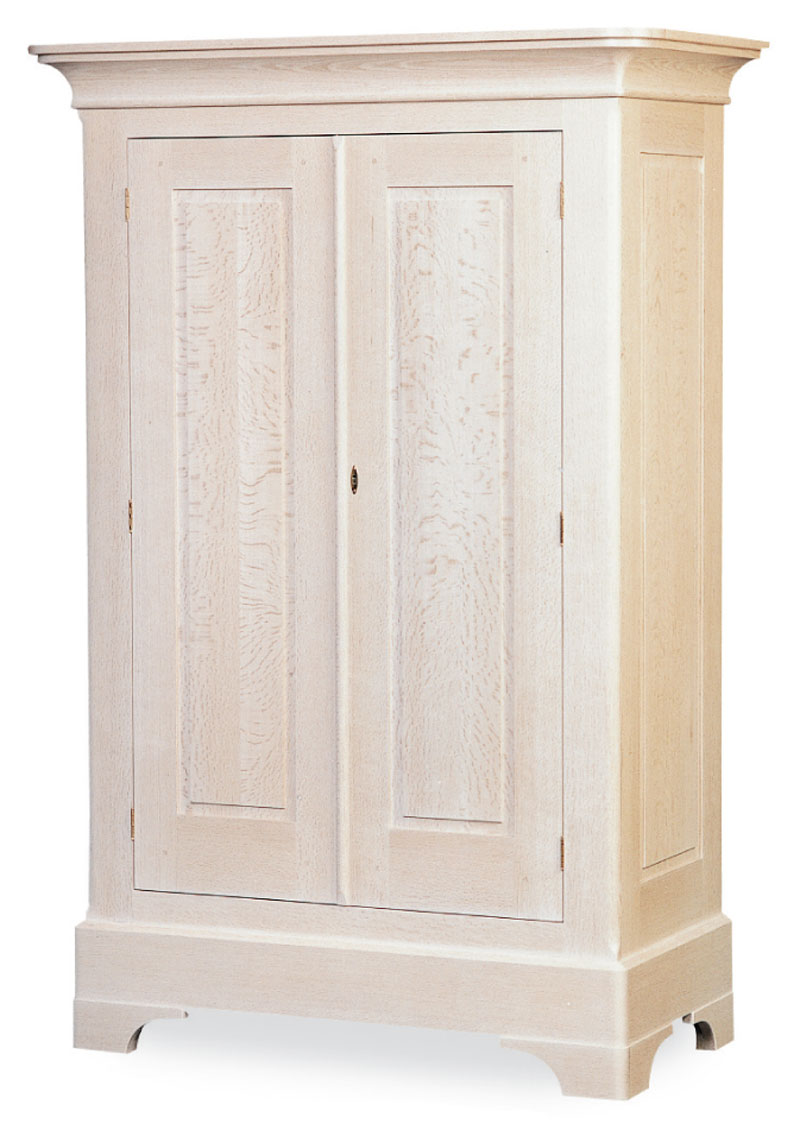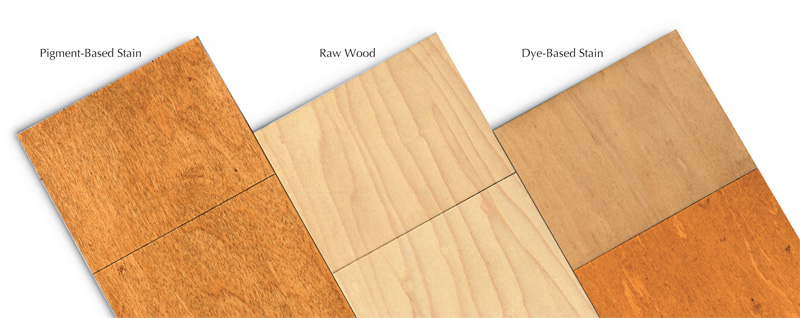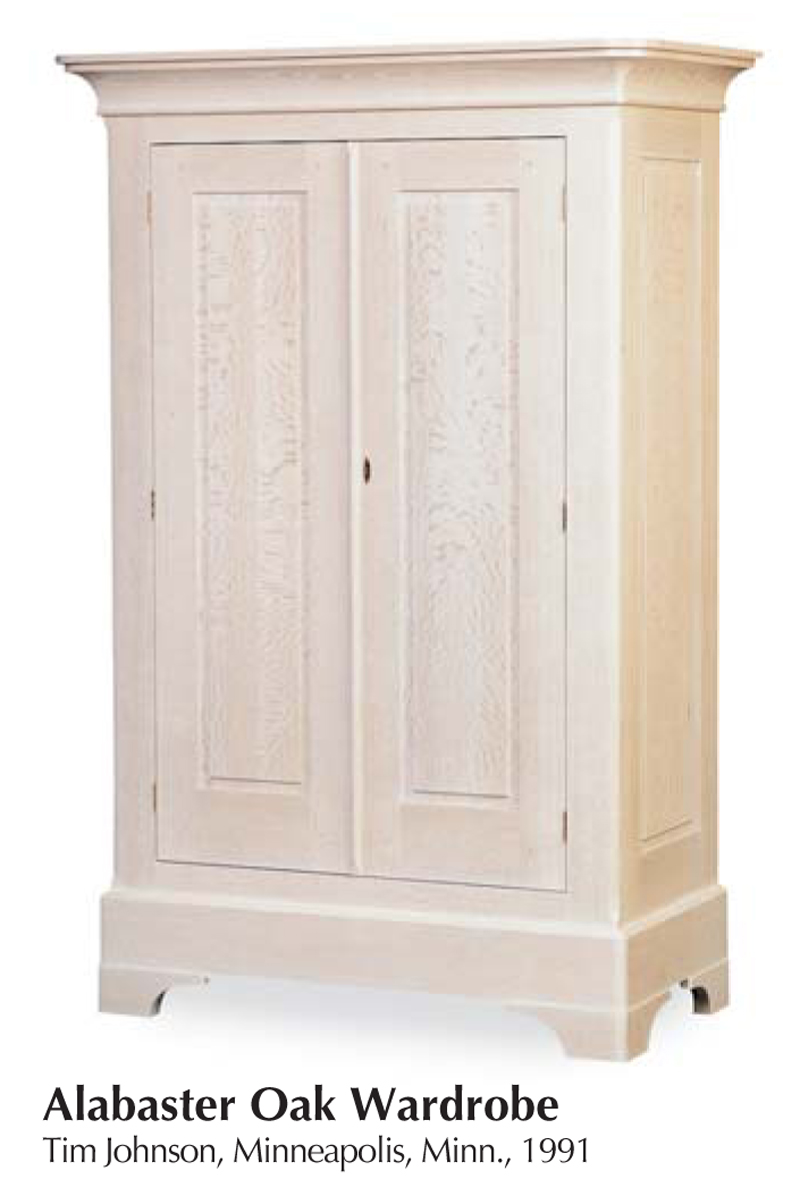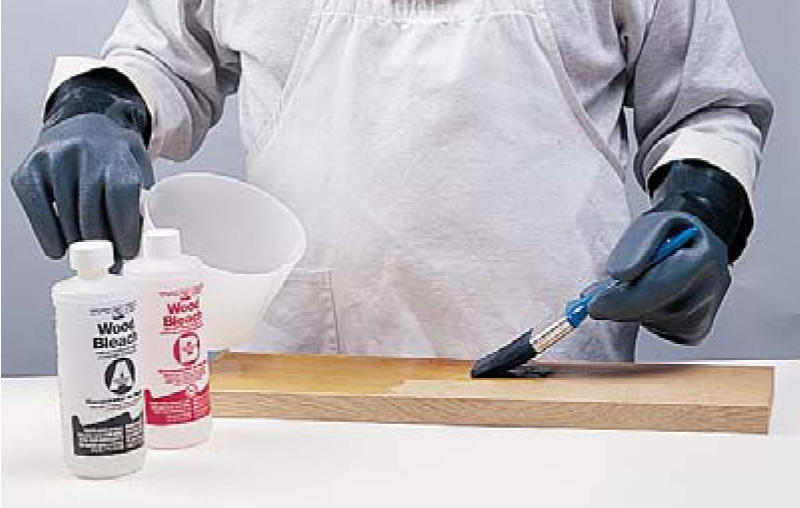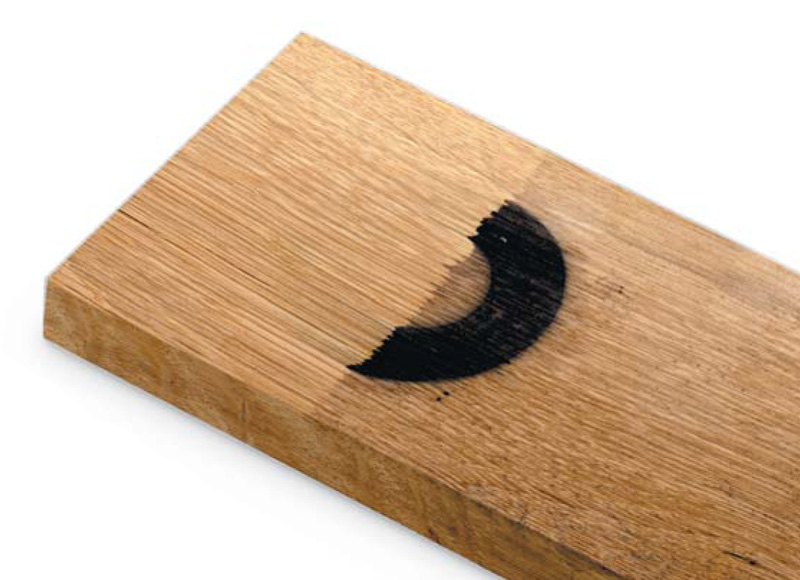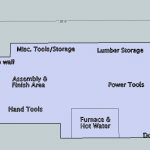We may receive a commission when you use our affiliate links. However, this does not impact our recommendations.
Bleaching Wood
Subtract color to add life.
By Michael Dresdner
There are four types of bleach that woodworkers commonly use: chlorine, two-part wood bleach, oxalic acid and peroxide. Two-part bleach changes the actual color of wood and the other three remove stains. Read on to find out what each one does and how to use them safely.
Chlorine bleach
Common household laundry bleach (sodium hypochlorite) will kill mildew on your deck and outdoor furniture, and will remove dye-based stain, but not pigment-based stain, from wood. Chlorine bleach can irritate skin and mucous membranes, so wear gloves and goggles.
Deck cleaner. To remove mildew from your deck or exterior furniture, first hose off the wood to remove any loose debris. Mix about a quart of chlorine bleach (Clorox, Purex, etc.) to each gallon of water. Use a syntheticbristle brush and scrub the surface with the bleach mixture. Be sure to wear goggles—it’s easy to splash. Reapply the bleach if necessary in order to keep the surface wet for about 15 minutes. Then, brush off the surface again and hose it down thoroughly with water. Keep the runoff away from plants, pets and other wildlife.
Fortunately, deck stains are formulated with pigments, so they are not affected by the bleach. Let the wood dry completely if you plan to re-stain. If you live in an area where mildew is a problem, choose a deck stain that contains a mildewcide, or add some yourself. Most home centers and paint stores sell them.
Dye remover. Chlorine bleach will remove most dye-based stains from raw wood but will not lighten the wood itself. This is handy to know if you finish your project with a dye, and then decide you want to “erase” it and start over. Chlorine bleach will also remove old dye that you might encounter during a refinishing project.
Use a synthetic-bristle brush or a clean rag to apply the bleach full strength. It should remove the color by the time it dries, but for stubborn stains, repeat the process. If you are removing the stain from an old piece of furniture that you are refinishing, make sure all the finish is off the surface and lightly scuff-sand it first. Bleach will not go through a finish.
As bleach dries, it breaks down to salt and water. Once the water evaporates, you’ll have salt residue on the wood. Brush it off before you finish the wood.
Chlorine bleach, full strength, easily removes most dye-based stain (right) but will not bleach raw wood white (center), nor will it remove pigment-based stain (left).
Two-part (A/B) wood bleach
Wood bleach actually lightens the color of wood. It can also de-color many pigments and dyes.
A package of wood bleach contains two bottles, usually labeled “A” and “B.” One contains lye (sodium hydroxide) and the other peroxide (hydrogen peroxide). The bleaching action occurs when the two chemicals come together in contact with wood.
Instructions for use vary from brand to brand. Some say to put part A on first, then apply B before A dries. Others suggest mixing the two just before application. The object is to get both chemicals and the wood all in the same place at the same time. Read the directions.
Use a synthetic-bristle brush or a clean rag to apply the bleach. When the lye goes on first, it initially darkens the wood. Once the peroxide goes on it is likely to foam as it reacts with the wood and lye. Let the wood dry completely, usually overnight, then sponge off all residue with plenty of clean water.
Use bleach like stain. Two-part wood bleach turns red oak bone-white, without obscuring the grain the way a pickling stain would. The top coat is water-based polyurethane.
Apply A/B bleach safely. Wear long neoprene gloves, with ends cuffed to catch drips, a waterproof apron, and goggles. Brush carefully. A/B bleach is extremely caustic and will quickly burn your skin and eyes.
Oxalic acid
Iron, in the form of nails, hardware, or even bits of steel wool, often leaves a blackish stain on woods high in tannin, like oak. A wash of oxalic solution removes these stains as well as the grayed color of oxidized wood.
Oxalic acid is sold in most hardware stores and home centers as a dry, white crystalline powder. The crystals are toxic and irritating to mucous membranes, so wear goggles and a dust mask when handling the dry powder. In a glass or plastic container, dissolve an ounce of oxalic acid into a pint of warm water.
Make certain that you have removed all the offending metal before you bleach the wood. Sometimes stains are caused by broken- off nails or bits of fencing that are hidden in the wood. Wet the surface with the oxalic acid mixture and let it dry. Repeat if the stain is not completely gone. Once dry, sponge the wood with plenty of clean water to remove the crystalline residue. Any oxalic acid residue left in the wood will make irritating dust when you sand, so wear a dust mask and eye protection.
Oxalic acid dissolved in water removes black iron stains like magic from tannin-rich wood like oak.
Peroxide
Maple is prone to a particular type of blue stain that is caused by mold during the drying process. A strong, 35- percent peroxide solution, like the “B” portion of wood bleach, can usually remove the stain.
Concentrated peroxide is very caustic, so wear goggles, gloves, and a waterproof apron.
You can buy 35- percent peroxide solution from a chemical supply company, or borrow it from your box of two-part wood bleach. Flood it onto the maple with a foam brush and let it dry completely. There is no need to wash it down, since peroxide (H2O2) neutralizes itself to water and oxygen. In extreme cases, when the peroxide alone won’t do the trick, two-part wood bleach will.
This story originally appeared in American Woodworker April 1999, issue #72.
Popularwoodworking.com is a participant in the Amazon Services LLC Associates Program, an affiliate advertising program designed to provide a means for sites to earn advertising fees by advertising and linking to Amazon.com and affiliated websites.
Here are some supplies and tools we find essential in our everyday work around the shop. We may receive a commission from sales referred by our links; however, we have carefully selected these products for their usefulness and quality.



